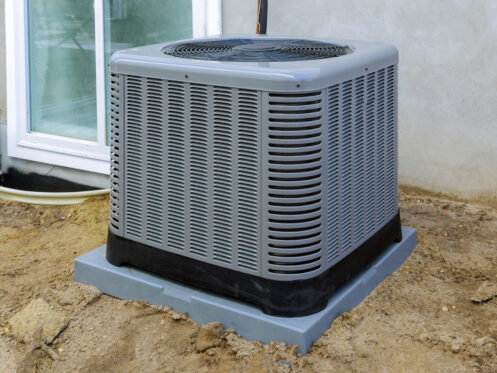Selecting the best spot to install an HVAC system is a critical decision with serious ramifications for the performance, productivity, and comfort of the building’s occupants. Over the years, a rooftop HVAC installation has evolved into a popular choice because it combines all the components in heating and cooling systems into one compact, optimized unit. It is especially common in urban areas, homes with small yards, and commercial properties. Markool Heating & Cooling is a Frederick, MD HVAC company that specializes in rooftop installations, offering exceptional services to residential and commercial clients.
Pros of Rooftop HVAC Placement
Space Optimization
One of the most convincing benefits of rooftop HVAC units is their ability to optimize the use of valuable indoor space. When the existing HVAC equipment is removed from the building’s interior and moved to the rooftop, property owners receive extra square feet to use. This space can be used in a variety of ways — for extra bedrooms, additional storage, or more ergonomic space planning for workstations. In other words, rooftop HVAC facilities optimize the use of indoor real estate.
Reduced Noise Pollution
Furthermore, conventional indoor HVAC units produce a considerable amount of noise, creating a disturbance in the living or working area’s calm and peaceful ambiance. Rooftop installation has a relative advantage in that it places the system’s loud units away from the areas where people spend most of their time. A rooftop installation will ensure that the primary noise-emitting units function on the roof while the living areas remain quiet and free from the droning sound and vibrations of the machinery. The improved acoustic environment can help increase productivity, promote restful sleep, and improve well-being among those using the areas.
Streamlined Maintenance and Accessibility
Routine maintenance, inspections, and repair in the event of system failure are other essential considerations for proper access to HVAC systems. In this regard, rooftop units provide a unique opportunity as they can be easily accessed by experienced contractors without disrupting the normal flow within the building. Thus, maintenance procedures can be performed timely and efficiently since all the components are in one cabinet. This means that the maintenance visits are shorter, which may save you money in labor costs.
Enhanced Security
Rooftop HVAC placement may also enhance the security of valuable HVAC investments in commercial, industrial, or high-security establishments. Because most installations cannot be readily accessed if placed on the roof, it safeguards the equipment from thieves.
Improved Ventilation
One of the greatest benefits of rooftop HVAC installations is the potential for superior ventilation capacity. By strategically placing the intake hood on the roof, further from obstructions or potential ground-level contaminants, the systems can more efficiently draw in cleaner, fresher outdoor air. The outdoor air mixes with the recirculated air and passes through a filter before entering the ducts. Alternatively, the rooftop unit connects to the building’s existing ventilation system.
Cons of Rooftop HVAC Placement
Higher Upfront Installation Costs
Despite the numerous benefits of rooftop HVAC units, there is one significant disadvantage — the higher cost of their initial installation. As opposed to indoor units, the process of lifting and securing the equipment on the roof requires more expensive and complex equipment, more of the workers’ time, and meticulous safety precautions. All of this leads to the substantially higher costs of this type of HVAC installation.
Exposure to Harsh Environmental Conditions
As an outdoor system, rooftop HVAC units are often at the mercy of harsh weather. Extreme temperatures and precipitation in the form of rain or snow, high winds, and other harmful conditions can result in quicker operational wear and tear. Consequently, the rooftop units may not last as long as expected and may require more frequent maintenance or even early replacements. Moreover, hailstorms or hurricanes may physically harm the rooftop unit.
Risk of Water Infiltration and Leaks
Despite the rigorous installation procedures and safety practices, rooftop HVAC units remain prone to the risk of water penetration and leaks. Deterioration of the sealants and flashing or extreme weather may damage the sealing that covers the connections and the system’s enclosures. The leaks can result in water pooling within the building, leading to compromised structural stability, mold invasion, and high repair costs. However, regular check-ups and preventive maintenance will prevent this from happening.
Aesthetic Considerations
A key disadvantage of rooftop HVAC units is visual pollution. Depending on the building or neighborhood’s design and aesthetic sensitivities, the exposed units are often considered an eyesore. For residential zones and designs with stringent architectural constraints, an exposed HVAC unit can ruin the curb appeal or disturb the neighborhood’s vibe.
Safety Risks for Maintenance Personnel
There are inherent safety risks associated with maintenance and repairs performed on rooftop HVAC units. The fact that HVAC equipment is installed above ground level, on possibly slippery or unstable roofing, and under potentially adverse weather conditions creates possibilities for accidents. Safety protocols, specialized equipment, and proper training are necessary for countering these risks and protecting the personnel engaged in maintenance and repair works on HVAC rooftop units.
Maintenance Neglect
We’ve all heard the saying “out of sight, out of mind,” and it’s honestly a pitfall when it comes to those rooftop HVAC units. Since they’re tucked away and out of your daily view, it’s easy to let regular maintenance and upkeep totally slip. Before you know it, months or years have gone by with no inspections, allowing dust and debris to build up slowly, straining the system. Parts are wearing out without you realizing until you’re hit with plummeting efficiency, skyrocketing bills, and even complete breakdowns. The fix is developing good habits around scheduling professional rooftop checkups to get everything cleaned and tuned up before little issues snowball into costly nightmares.
Vulnerable to Animal and Pest Intrusion
On the rooftop, those outdoor HVAC units are laying out the welcome mat for some unwanted guests — birds, rodents, and insects. These pests can easily make themselves at home inside the system, causing costly damage by chewing through wiring, building nests with insulation, and generally making a mess. Beyond just degrading performance, you could be looking at potential health hazards from droppings and nesting materials circulating through your air system.
Contact Us Today
Whether you are a residential homeowner looking to improve your living space’s overall comfort and energy savings or a commercial client, Markool Heating & Cooling has all of your HVAC and plumbing needs covered. Our company provides a full suite of services, from cutting-edge installations and replacements to emergency repairs and routine maintenance, performed by NATE-certified technicians using their combined industry expertise and top-rated practices to ensure that our solutions always exceed expectations. You don’t have to compromise on comfort, energy efficiency, or indoor air quality. Reach out to Markool Heating & Cooling now to schedule an appointment and discover which rooftop HVAC option is best for your building. Our team of experts will be on hand to assist you with any questions or worries and prepare a tailored evaluation for you. Contact Markool Heating & Cooling today!






